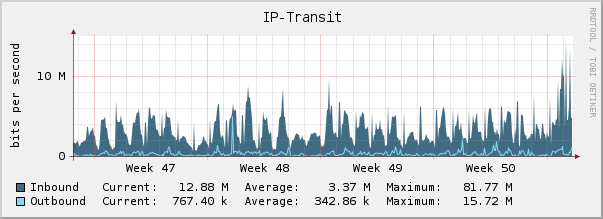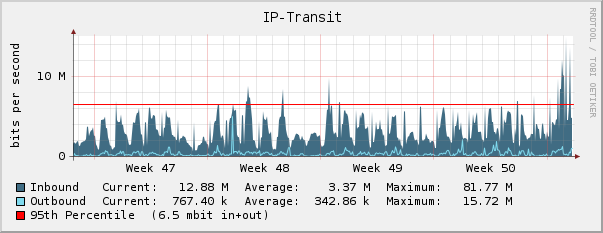THE 95% RULE
Billing for Committed (CDR) and Burst Data Rate
Init7's bandwidth services are billed according to the so-called 95% rule.
In case of a violation of the 95% rule, the exceeded bandwidth (the burst rate) is retrospectively charged. Init7 handles this matter in an uncomplicated manner and, on occasion, overlooks a few percentage points. In these instances, our employees analyze the customer's bandwidth statistics. If the traffic consistently increases, they negotiate a higher CDR bandwidth with the customer for the next billing period to create more transparent and predictable cost structures.
The 95% Rule Calculation
Example: The customer subscribes to a 10Mbps service on a 100Mbps connection. 10Mbps is referred to as CDR (Committed Data Rate), which is the bandwidth the customer pays for, regardless of whether it is used. 100Mbps is referred to as the burst rate. The customer can use more than 10Mbps of bandwidth for a short or extended period, exceeding their CDR, up to a maximum of 100Mbps. This process is called "bursting" (exceeding bandwidth). Bandwidth usage is measured every 5 minutes and typically depicted graphically:
Graphical Representation of Bandwidth
During the agreed-upon period (usually a month), the customer must not burst more than 5% of all measurements. In other words, 95% of all measurements should be within the agreed-upon CDR, in our example, below 10Mbps. With measurements taken every 5 minutes, that amounts to 432 exceeded measurements out of 8640 per month. Put differently, the 10Mbps can be exceeded for a maximum of 36 hours per month without violating the 95% rule.
Graphical Representation of the 95% Rule:

Alternative billing methods include the stricter 98% rule (allowing a maximum of 14 hours of exceedance) or the softer average rule (average billing). However, the latter is usually associated with a much higher traffic price.
